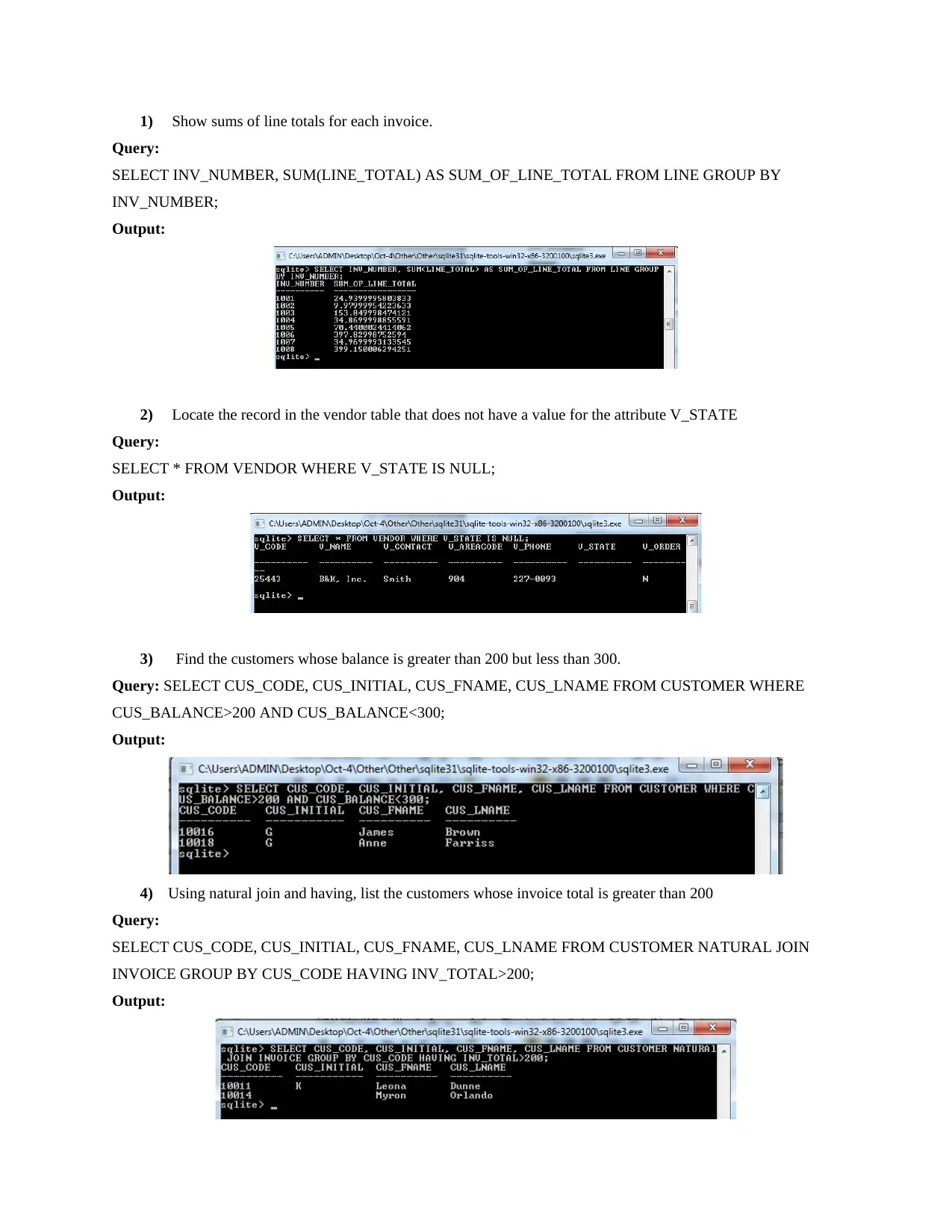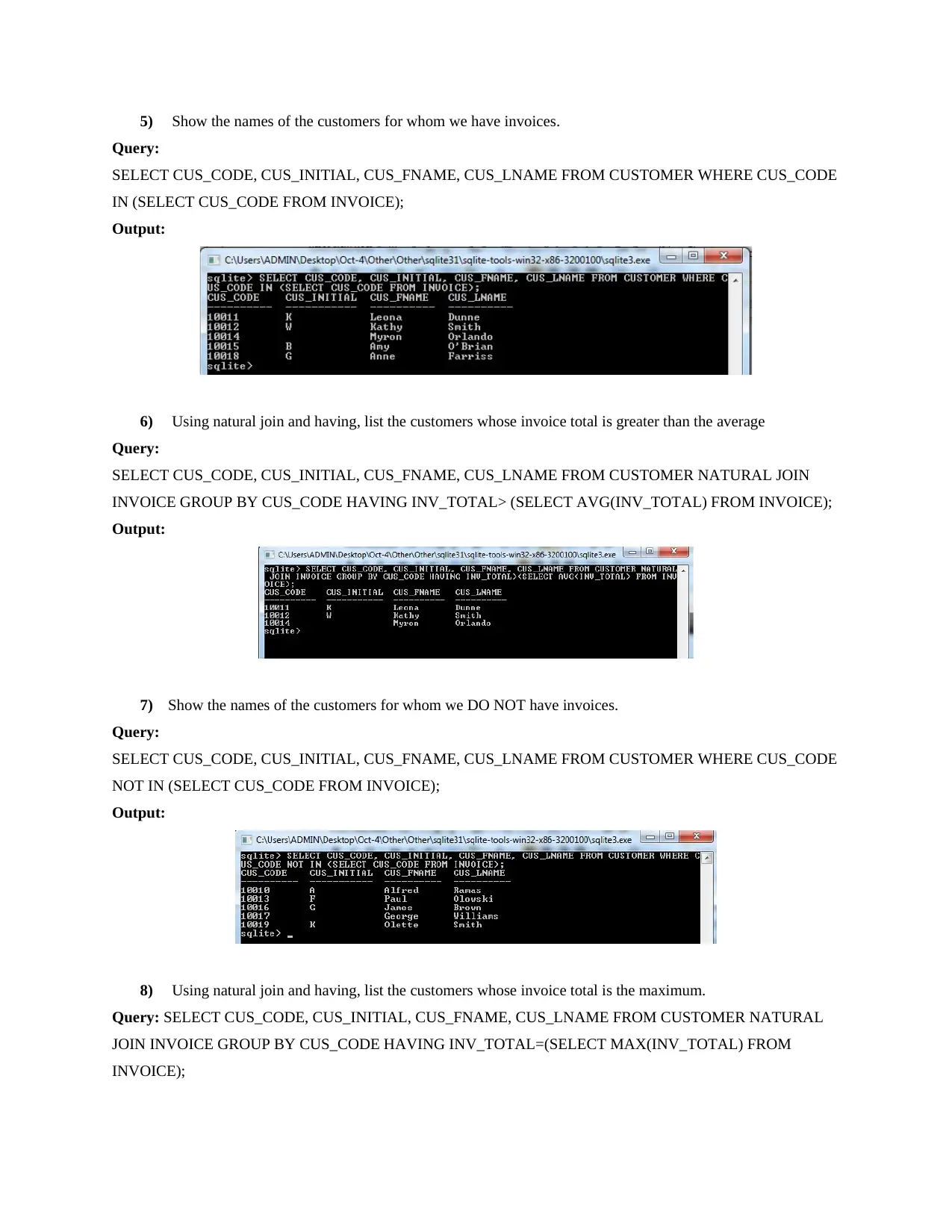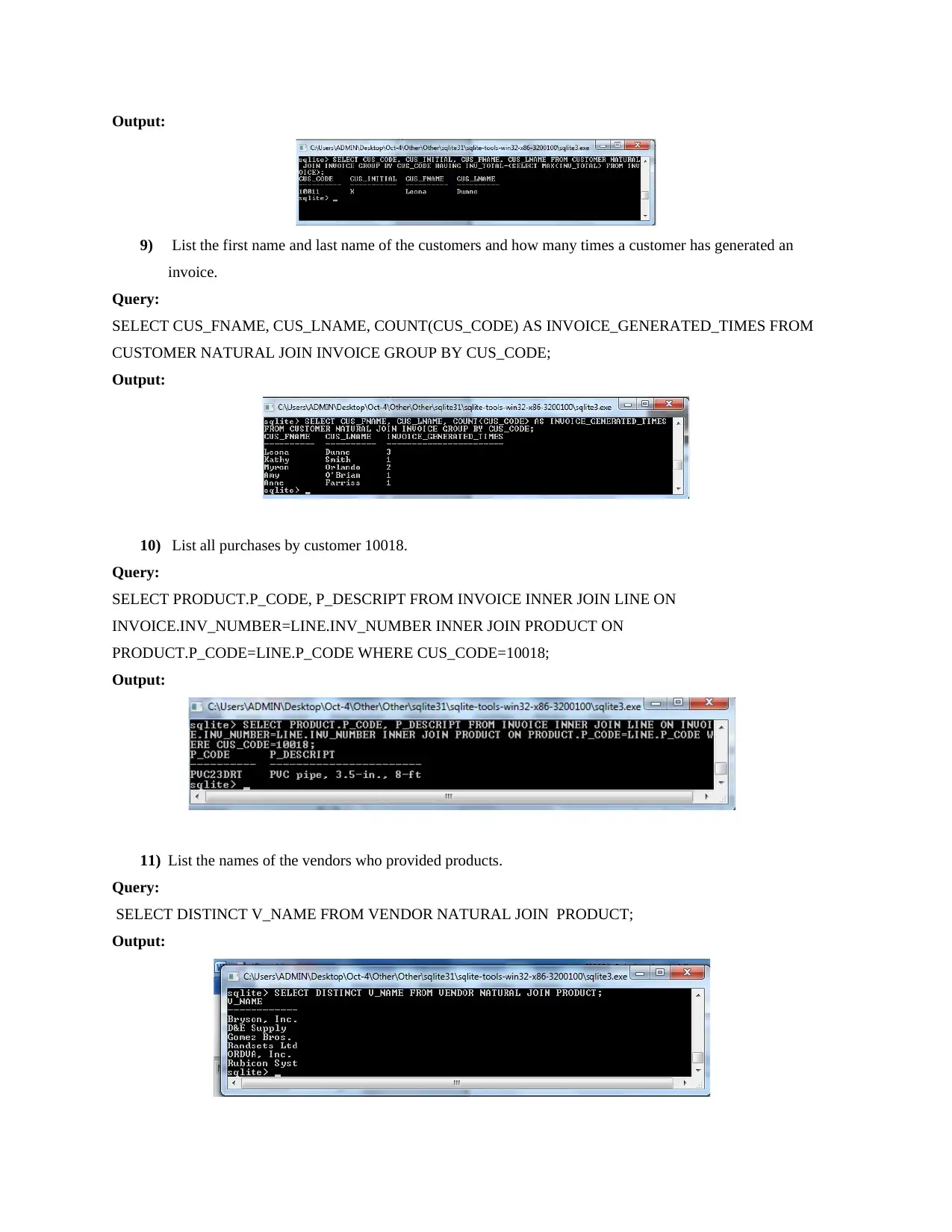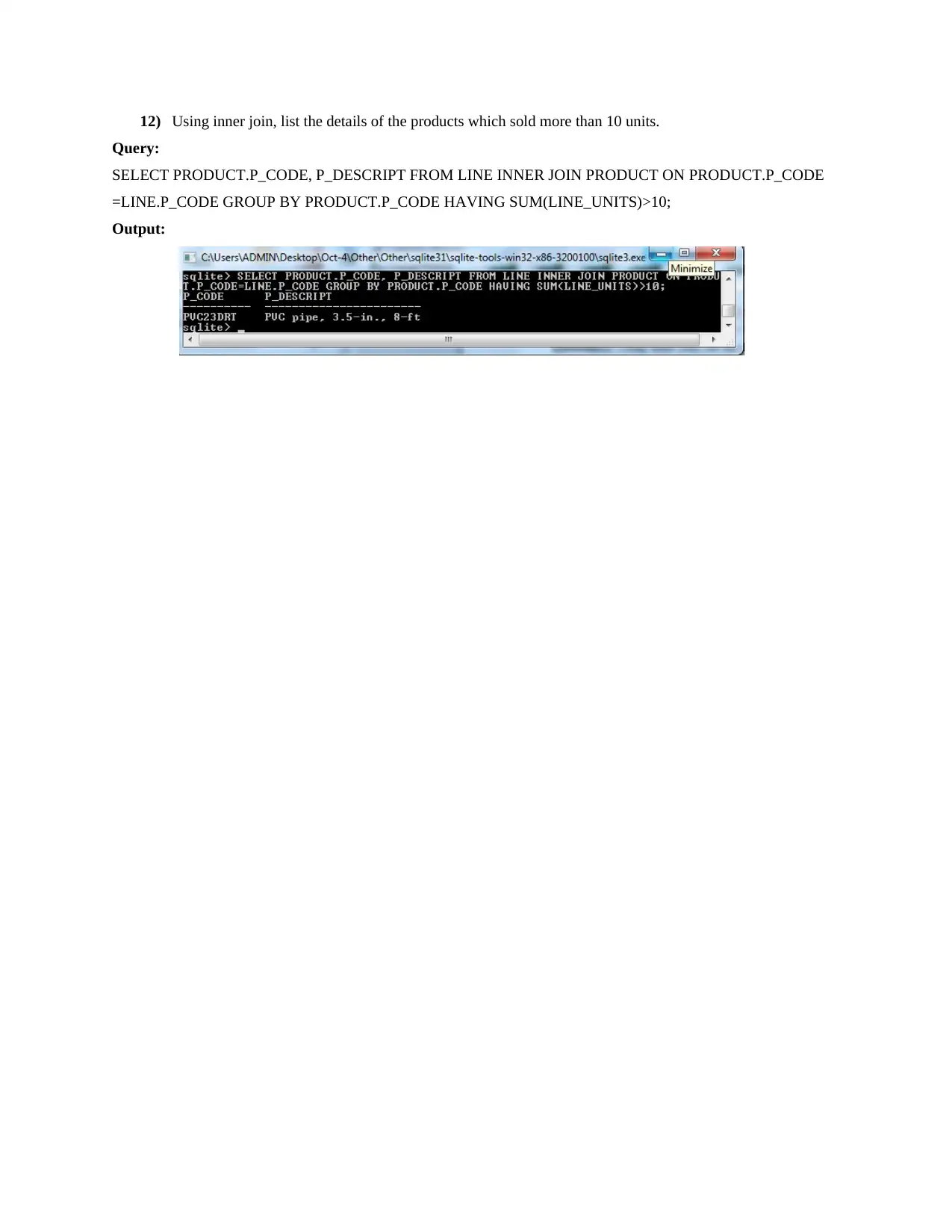Database Queries and Results Analysis for Customer and Product Data
VerifiedAdded on 2020/03/23
|4
|451
|190
Homework Assignment
AI Summary
This assignment presents a series of SQL queries designed to extract and analyze data from a relational database. The queries cover various aspects of data retrieval, including selecting specific records, calculating sums and averages, and joining tables to retrieve related information. The assignment includes queries to find customer information based on different criteria, such as balance, invoice totals, and whether they have invoices. It also explores queries to find product details and vendor information. Furthermore, the assignment demonstrates how to use aggregate functions and joins to generate insightful reports. This assignment is a valuable resource for students learning database concepts and SQL query writing, providing practical examples of how to retrieve and manipulate data for various business scenarios. The solutions are available on Desklib, a platform offering AI-based study tools for students.
1 out of 4











![[object Object]](/_next/static/media/star-bottom.7253800d.svg)